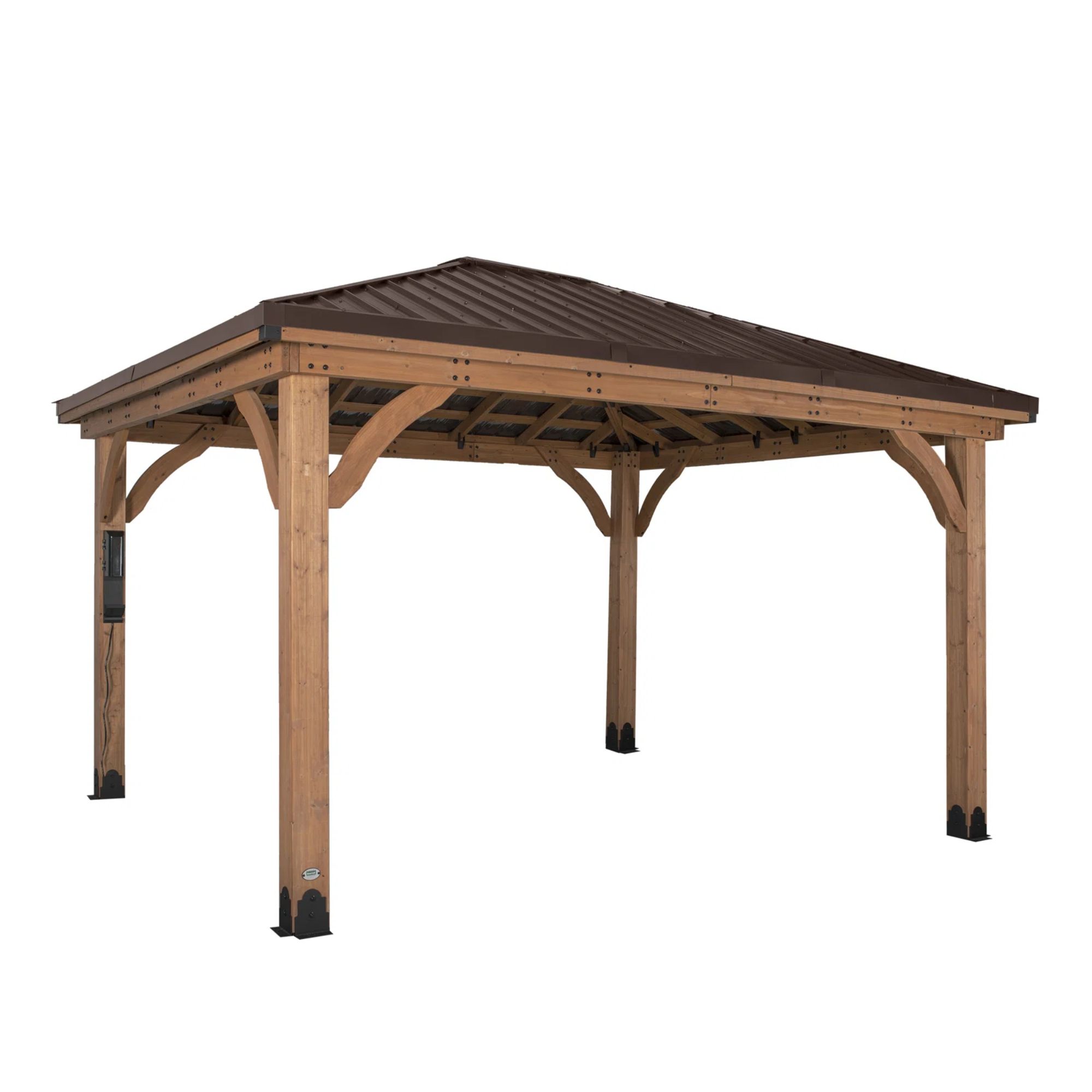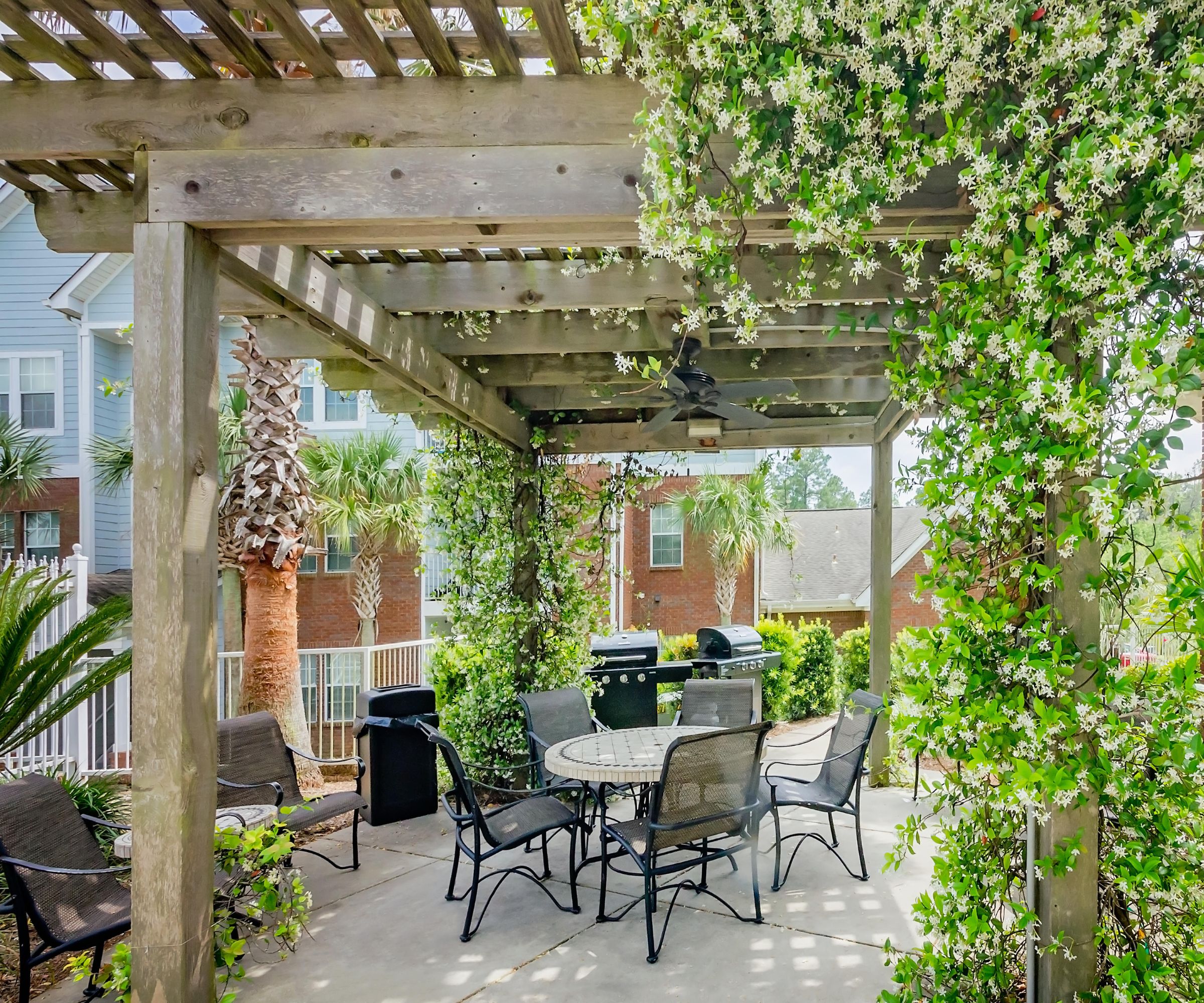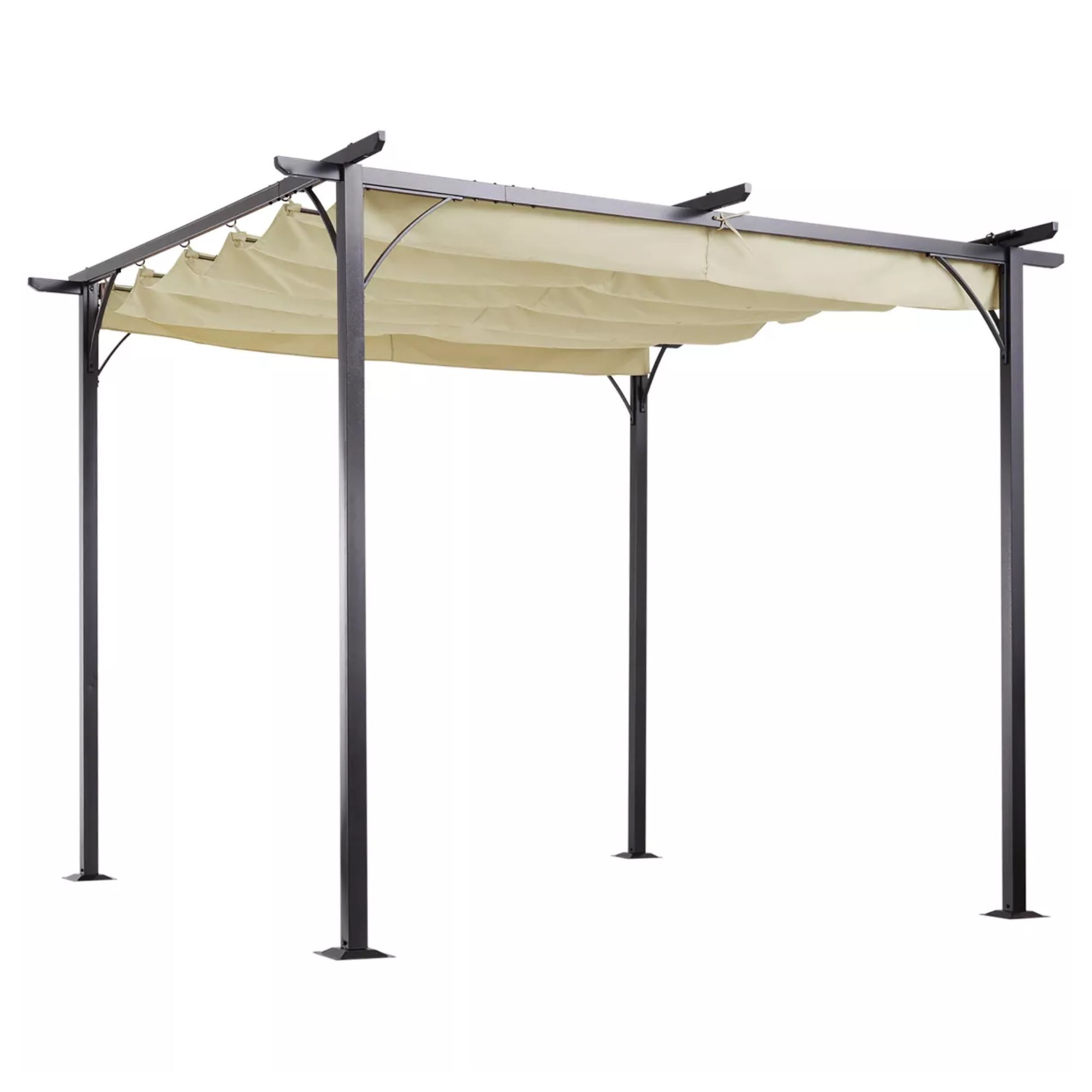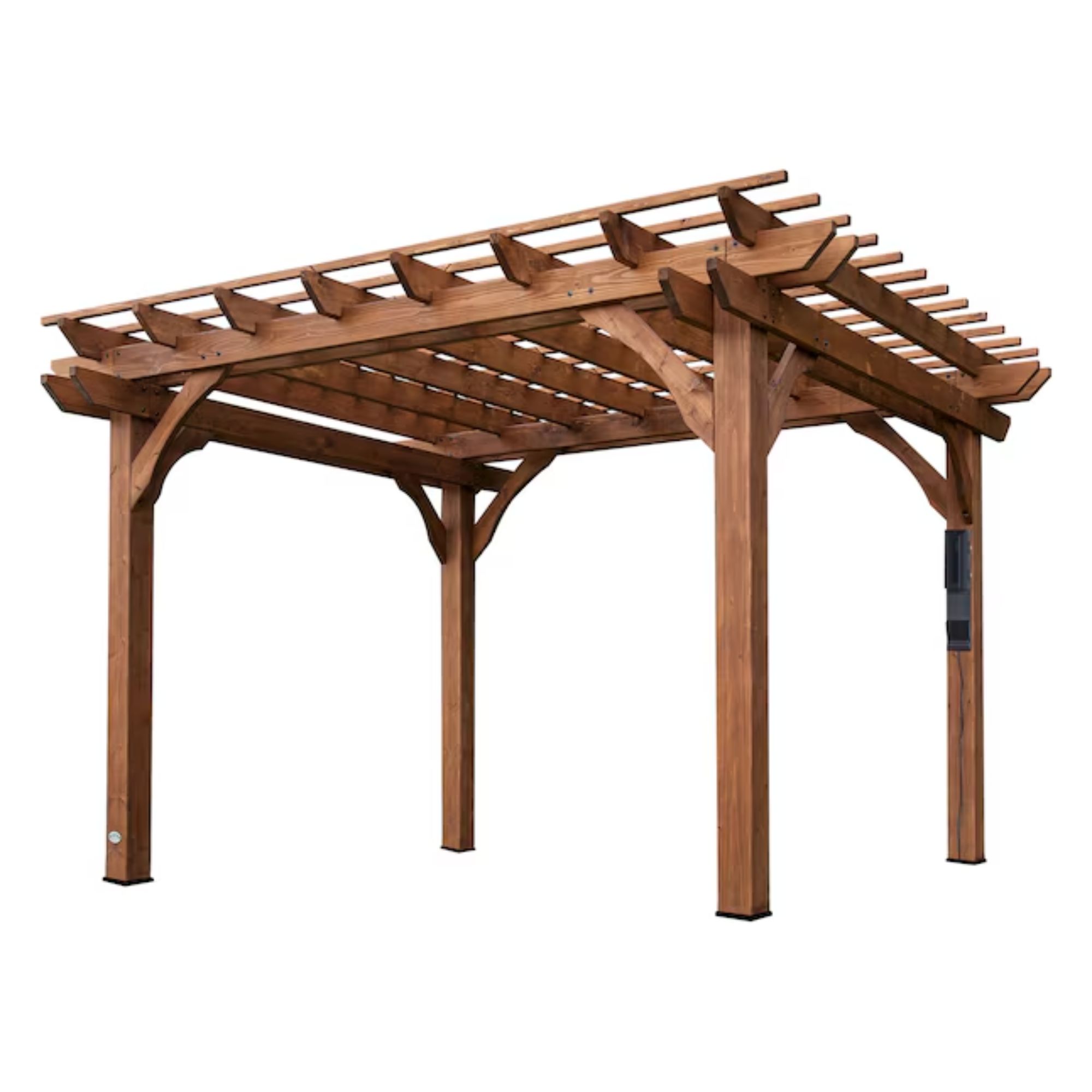What's the difference between a gazebo and a pergola?
A gazebo and a pergola may appear to be almost identical, but can in fact perform very different functions in your backyard


A gazebo or a pergola offers the perfect place for shade and entertaining family. These structures are perfect for adding extra hosting space on a deck, patio, or lawn.
If you're new to garden design, it's not immediately obvious that there's any difference between a gazebo and a pergola. However, there's a crucial difference which means that the two terms aren't interchangeable.
I spoke to landscaping and garden structure experts for their technical distinctions between the two, and why you might opt for a gazebo over a pergola.
What is a gazebo?

The simple distinction is that gazebos have roofs and pergolas just have beams. Landscaping expert Cate Singleton put it more technically. 'A gazebo is most often a free-standing structure with a solid roof and open walls. These can be a decorative feature in the landscape, as well as a functional shaded outdoor space.
There are two main styles of gazebo. There are cheaper, modern metal structures and traditional wooden structures. Outdoor structure specialist Kevin King told me that 'Traditionally, gazebos often have a double-tiered roof (with a cupola or double deck roof) and are built in a hexagonal or octagonal shape. I would say that their style is more of a Victorian-era look.' These are permanent structures that usually cost thousands of dollars and have to be installed by contractors.
However, most 'gazebos' these days are metal structures made from lightweight aluminum or steel. These cheaper models are still gazebos, but they are semi-permanent, and can be disassembled for the winter or if you need to move house.

Cate is a garden expert and Director of Design for Tilly. Tilly is a landscape design company that serves homeowners nationwide. Homeowners are matched with a professional designer to create a custom plan for their yard based on their geography, goals and needs.
Kevin King works for Lancaster County Backyard, a company which builds pavilions, pergolas, gazebos, timber frame structures, sheds, and garages.
What is a pergola?

A pergola, on the other hand, doesn't have a roof. It is made of posts and beams like a gazebo, but unlike a gazebo, does not have any roof covering. This means that a pergola can have plants trailing across it to create shade in a way which isn't possible for a gazebo.
Design expertise in your inbox – from inspiring decorating ideas and beautiful celebrity homes to practical gardening advice and shopping round-ups.
It's a very straightforward definition. Landscape designer Cate Singleton told me that she defines a pergola as 'an open-air shade structure constructed of posts, beams, and rafters.' Outdoor structure specialist Kevin King agrees, telling me that 'A pergola is traditionally a square or rectangle outdoor structure consisting of four-six posts and an open roof-like frame.'
What are the benefits of a gazebo?

Cate told me that 'Full roof coverage is the biggest benefit of a gazebo.' Because they have roofs, gazebos offer a point of shelter in your garden. If you love to entertain, you can sit your guests under a gazebo when you eat, shading them from the full glare of the sun and keeping them dry if there's a sudden shower of rain.
The roof provides a basis for screens, too. Cate told me that you can add screens on the side of a gazebo for privacy and to keep bugs out, almost giving you another room in your garden.
If you opt for the cheaper frame option, your gazebo is also moveable. The frames are easy to disassemble and reassemble and are held down by tent pegs, so you don't need to do any digging or pouring concrete to install a gazebo. This also makes it much cheaper than a pergola, even if you opt for fancier options with screens and power outlets.

Seats: 4 Dimensions: 10ft x 10ft x 9.30ft Materials: iron, polyester
This gazebo is perfect for hotter climates. The usual heavy curtains are supplemented with light, airy netting that will keep you cool and protected from bug bites without closing off the entire gazebo.

Seats: 8 Dimensions: 14ft x 10ft x 9ft Materials: cedar, steel
This gazebo is a classic wooden design that will work for most gardens. However, the best feature is hidden at the back. This gazebo has a power outlet built-in, so you can run electric grills, speakers, TVs, and projectors in the great outdoors.

Seats: 6 Dimensions: 12ft x 12ft x 9ft Materials: cedar, pine
If you want a permanent structure, I like this octagonal design. Made by Amish craftsmen in the USA, this traditional gazebo is built to last. It's perfect for a quiet area at the bottom of the yard, away from the noise of the house and the street.
What are the drawbacks of a gazebo?

However, Cate Singleton notes that large, traditional wooden gazebos 'can be a more costly option. They can also require permitting through a local municipality, which can cause delays in construction.'
She adds that on top of that, large traditional gazebos 'can take up a good bit of prime real estate on the site, so keep scale in mind when planning your outdoor structure. They may make a small space feel smaller.' At the same time, Kevin King noted that even some large gazebos are 'only designed for up to 4-5 people at a time, so if you are looking to host groups of people, gazebos will get crowded'.
On the other hand, cheaper gazebos are so light that they can easily blow away in storms, so if you live in tornado alley, you may find a gazebo too flimsy.
What are the benefits of a pergola?

One of my favorite benefits of pergolas is that you can trail climbing plants over them, which is great for garden design. Rambling roses, wisteria, honeysuckle, and in the right climate, even grapes look great.
This trailing feature also applies to other parts of your garden design. One of my favorite cheap elevations to a basic yard is to drape solar lights like these from Amazon over a pergola. It doesn't cost much, but this small touch brings a romantic, summery feel to a backyard.
Cate said that like gazebos, 'Pergolas can be used to extend your usable space and create an extension of indoor living to incorporate a shady spot outdoors. Pergolas can remain open-air, or incorporate fabric canopies, or a more impermeable material for more consistent shade coverage. These can also be a cost-effective option for creating outdoor living spaces.'

Seats: 4 Dimensions: 7.5ft x 10ft x 10ft Materials: power-coated steel, UV resistant polyester
I love this pergola because it's easy to retract the sunshade. You can have the best of both worlds; bright sunshine to warm you up and a shade to keep you warm. Best of all, it's one of the cheapest pergolas I've found, but it doesn't look it.

Seats: 6 Dimensions: 8ft x 10ft x 14ft Materials: cedar
This wooden pergola is perfect for entertaining. As well as all the usual benefits of a pergola, it has a bar built in, so you have somewhere to mix drinks outside or set up a tabletop griddle for cooking.
What are the drawbacks of a pergola?

The biggest drawback of a pergola is that it isn't covered. A pergola doesn't give you much shade form the sun, and it won't keep the rain from your head. You'll have to pay extra for a pergola canopy or shade sail. If you decide to trail plants up your pergola, it could take months or years before you achieve the desired effect.
Maintenance and upkeep are trickier with a pergola than with a traditional gazebo. Kevin King told me that 'Wood pergolas tend to require more maintenance because of the lack of a roof barrier. Rain and sun have direct access to the main structure of the pergola and will break down much faster. This increases the amount of upkeep needed.
On top of that, all styles of pergola are tricky to install. Kevin says 'To install a pergola, you first need a foundation, ideally a paver or concrete foundation. If you do not have one, this is a drawback because you have to install one.'
Which is best?
Ultimately, it depends on what you want to achieve in your space. Cate says 'I think each shade option has its place in the landscape. Larger properties can benefit from the solid gazebo structure while a pergola on a smaller property can be a great option for extending the use of your outdoor space.'
FAQs
Can a pergola be freestanding?
Yes, pergolas can be freestanding. In fact, most pergolas are freestanding, and supported by four or 6 posts concreted into the ground.
For more help with gazebos and pergolas, take a look at our guide to how to build a pergola on a deck, or our pergola lighting ideas.

As a gardens and lifestyle contributor, Alex makes sure readers find the right information to help them make the best purchase. Alex got his start in reviewing at the iconic Good Housekeeping Institute, testing a wide range of household products and appliances. He then moved to BBC Gardeners’ World Magazine, assessing gardening tools, machinery, and wildlife products.
